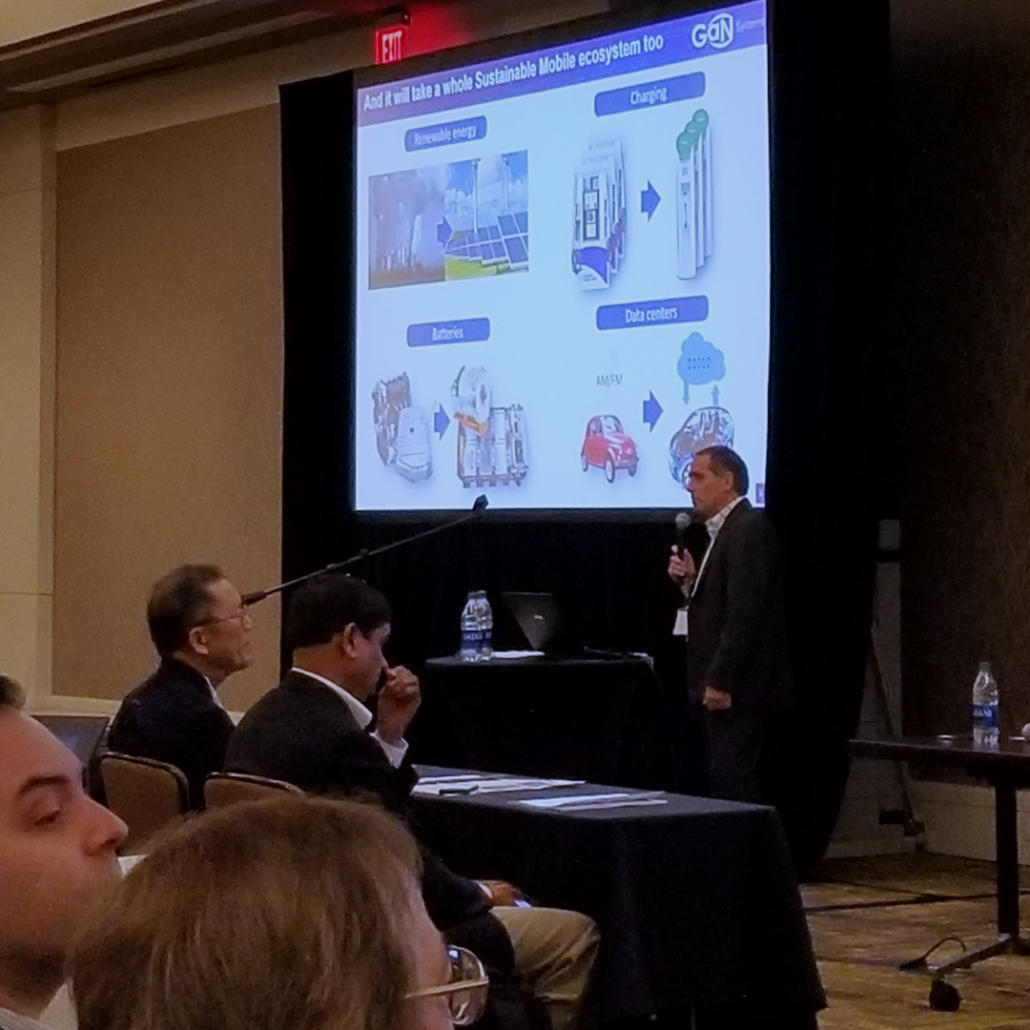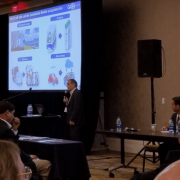Key Takeaways: The 7th Workshop on Wide Bandgap Power Devices and Applications (WiPDA 2019)
By Peter A. Di Maso, Director at GaN Systems
It was a great pleasure to attend and participate at the recent WiPDA 2019 conference held on the campus of North Carolina State University. The week started off with the semi-annual meeting of JEDEC‘s JC-70 Wide Bandgap Power Electronic Conversion Semiconductor committee. JEDEC is the global leader in developing open standards for the microelectronics industry, with more than 3,000 volunteers representing nearly 300 member companies.
The JC-70 committee just recently celebrated its second anniversary and is responsible for establishing industry guidelines concerned with reliability and qualification procedures, test and measurement methods and data sheet elements. The members of this committee, made up of a cross section of wide band-gap industry leaders, contribute with the passion required to ensure we make progress. This results in spirited discussion and effective discussions on facilitating GaN and SiC adoption in power conversion. Kudos to the volunteers that make up JC-70.

Peter Di Maso presents GaN Systems’ Dr. Lei Kou’s paper on GaN advantages in low frequency applications.
The next day, we kicked off with the 7th IEEE Workshop on Wide Bandgap Power Devices and Applications (WiPDA 2019) plenary sessions. I particularly enjoyed the plenary address from Dr. Sandeep Bala from ABB Corporate Research on Using Gallium Nitride. Dr. Bala addressed the benefits of GaN and how he and his team overcame some of the challenges.
It was an honor for me to be on a panel that discussed GaN power device market adoption and the accelerators and barriers to market penetration. It was invigorating to be part of a diverse panel with Robert Kaplar from Sandia National Labs, where researchers are working on wide bandgap materials that are replacing silicon as the backbone of the power semiconductor industry, effectively breaking down barriers. Tim MacDonald, co-chair of JC-70.1 GaN subcommittee, emphasized users are on a learning curve and the JC-70.1 is helping to accelerate that curve. Also, on the panel were representatives from Texas Instruments (Sandeep Bahl) and Infineon Technologies (Alain Charles).
Furthermore, it was a privilege on the final day of the conference to have the opportunity to chair a session on GaN Applications, where intelligent papers from the likes of University of Lyon and University of Arkansas were presented. Finally, I presented GaN Systems’ Dr. Lei Kou’s paper on GaN advantages in low frequency applications.
In conclusion, it would be an understatement to say GaN has become mainstream in new power electronics designs. It is not just at the forefront of development discussions. Engineers understand the performance benefit and management understand economic benefits understand of moving to GaN.


